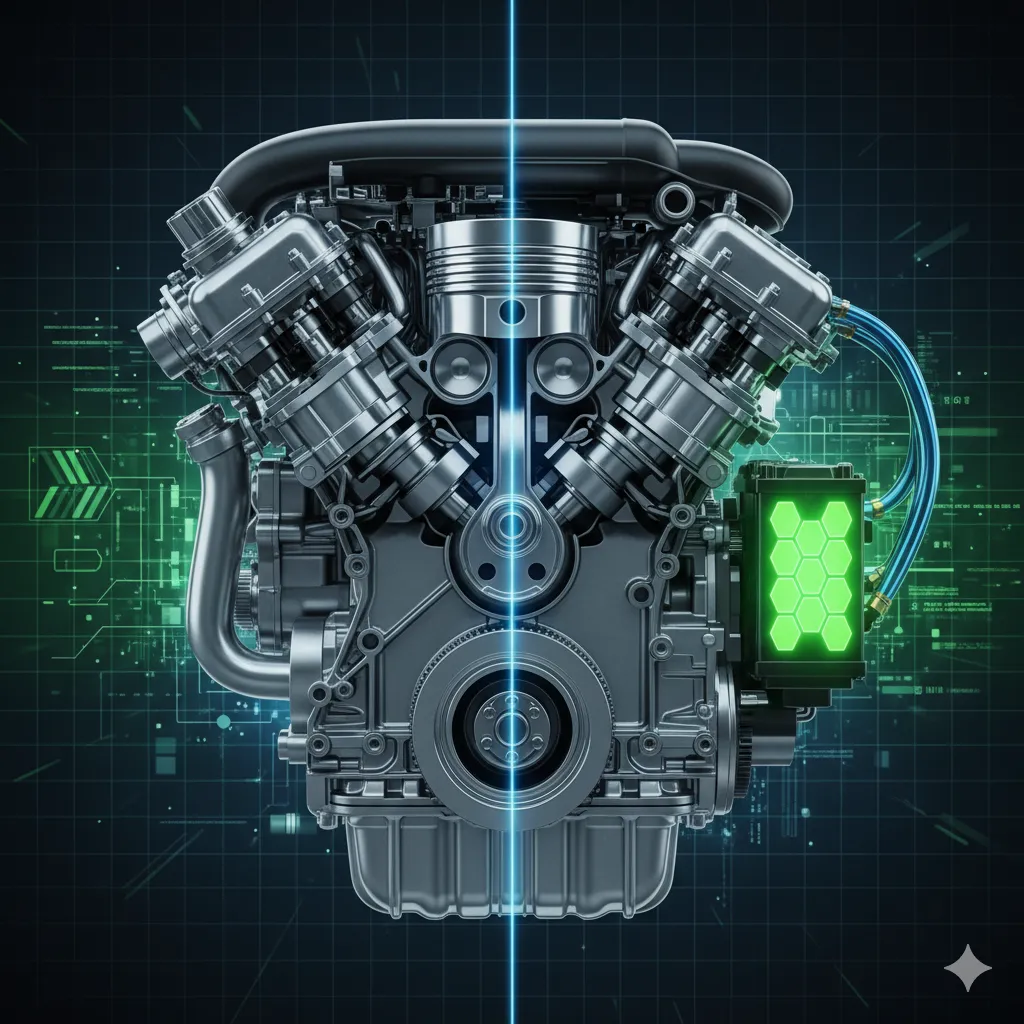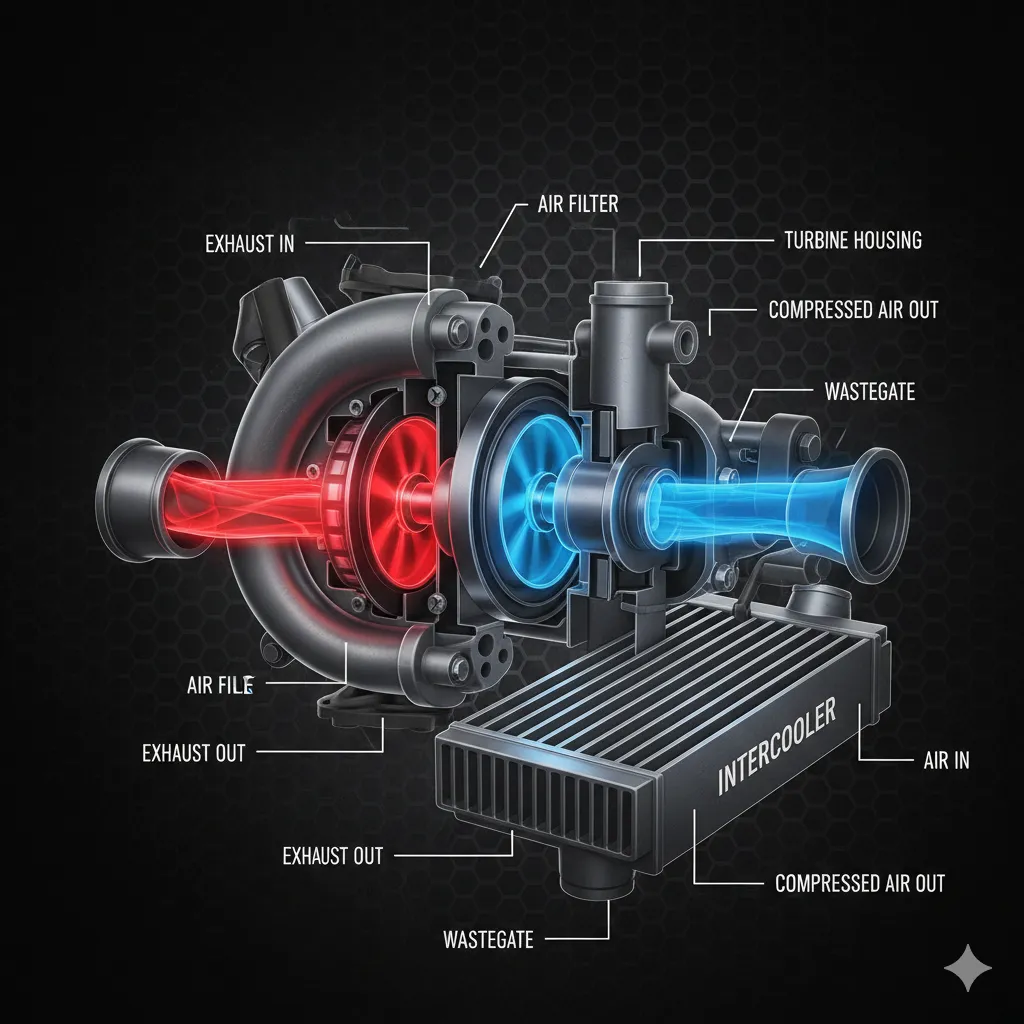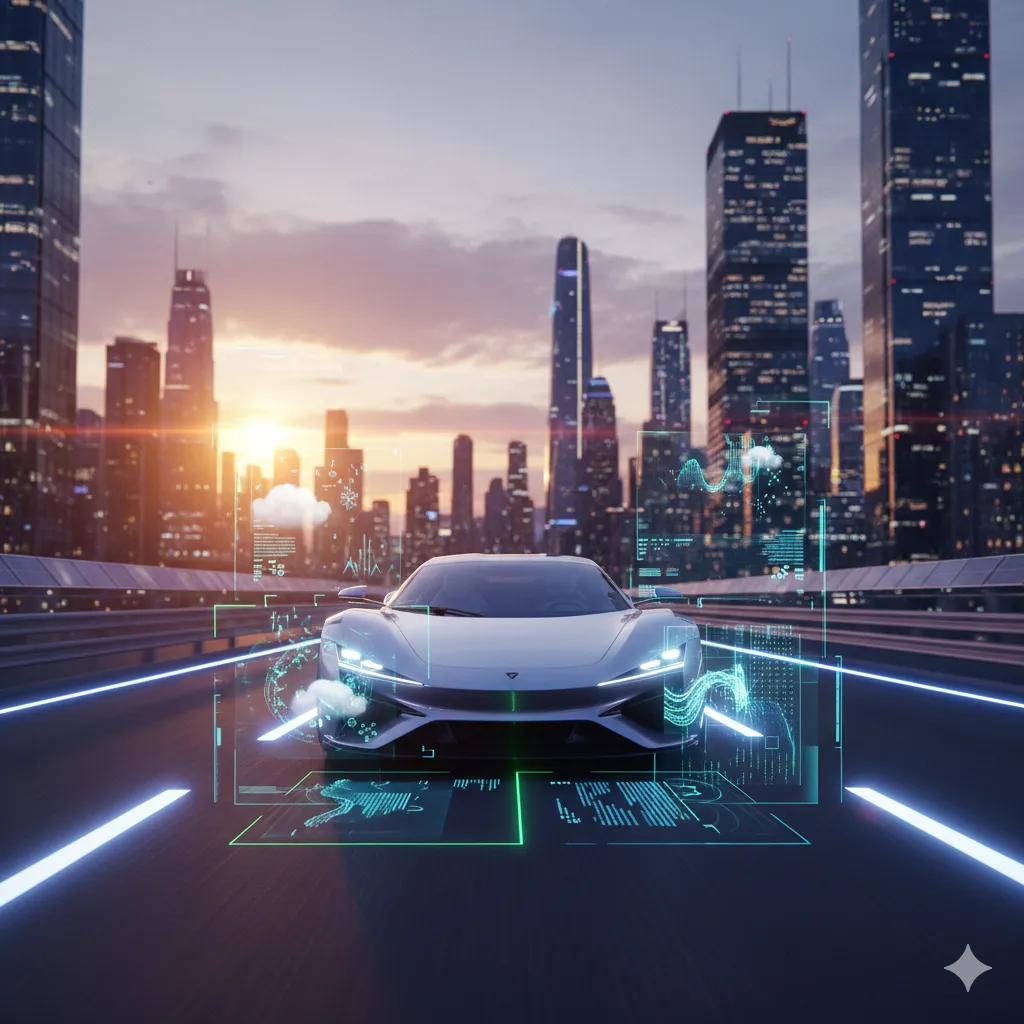
🚗 Driving Green: How Car Brands Are Making Engines More Eco-Friendly
The Multi-Pathway Approach to Eco-Friendly Engines
The conversation around sustainable vehicles often begins and ends with electric cars. However, a significant portion of the global vehicle fleet still relies on internal combustion engines. Recognizing this reality, leading car brands are not putting all their eggs in the EV basket. Instead, they are pursuing a "multi-pathway" strategy, focusing on three key areas to make car engines more eco-friendly: electrification, combustion engine optimization, and alternative fuels.
This comprehensive approach ensures that sustainable driving is accessible to everyone, regardless of infrastructure or budget, and maintains the automotive supply chain and expertise around the globe.
Electrification: The Core of Sustainable Power
While the fully electric vehicle (BEV) is the zero-tailpipe-emission champion, hybrid technology represents the most immediate and widespread way to make the engine itself more eco-friendly.
H3: The Evolving Hybrid System
Hybrid vehicles (HEVs) and plug-in hybrid electric vehicles (PHEVs) pair a traditional gasoline engine with an electric motor and battery. The synergy between these components dramatically boosts efficiency and reduces emissions.
-
Regenerative Braking: Modern hybrid systems capture kinetic energy that is normally lost during braking, converting it into electricity to recharge the battery. This allows the combustion engine to work less.
-
Engine Downsizing: The electric assist allows car brands to use smaller, more efficient gasoline engines without sacrificing performance. This is a common strategy for making car engines more eco-friendly in popular models.
-
Next-Generation HEVs: Companies like Toyota and Honda are continually refining their hybrid drive systems, using lighter components and more intelligent energy management software to maximize electric-only driving time, further lessening the engine's carbon footprint. Honda's next-generation hybrid systems, for instance, are aiming for a significant improvement in fuel efficiency.
ICE Optimization: Making Gasoline Engines Lean and Clean
Even without an electric motor, the pure internal combustion engine is far cleaner and more efficient than its predecessors. Strict global regulations, such as the Euro 7 standard and CAFE standards, are forcing manufacturers to push the limits of traditional engine design.
H3: Advanced Combustion Technologies
Manufacturers are utilizing complex engineering to ensure every drop of fuel is used as efficiently as possible.
-
Variable Compression Ratio: Nissan's VC-Turbo engine is a pioneering example. It can seamlessly change the compression ratio of the engine on the fly. A higher ratio is used for efficiency (cruising), while a lower ratio is used for power (acceleration). This flexibility is critical for making car engines more eco-friendly across all driving conditions.
-
Cylinder Deactivation: This technology, used by brands like Ford and General Motors, allows the engine to shut down two or more cylinders when full power is not needed. This dramatically reduces fuel consumption and is one of the smartest ways car brands are adapting the conventional engine.
-
Advanced Emissions Control: Systems like Selective Catalytic Reduction (SCR) for diesel engines inject a urea-based fluid into the exhaust stream, which converts harmful nitrogen oxides (NOx) into harmless nitrogen and water vapor. Diesel Particulate Filters (DPFs) also trap soot, significantly reducing air pollution.
The Future of Fuel: Carbon-Neutral Alternatives
The most exciting and potentially disruptive path to making car engines more eco-friendly involves changing what goes into the fuel tank. This ensures that the existing infrastructure and beloved driving dynamics of an ICE can continue with a vastly reduced carbon impact.
H3: Hydrogen and Fuel Cells
While the Hydrogen Fuel Cell Vehicle (FCEV) uses hydrogen to generate electricity (with water as the only byproduct), an even newer development is the direct Hydrogen Internal Combustion Engine.
-
Hydrogen ICE: Toyota and others are actively developing engines that burn liquid hydrogen directly. This allows the engine to have zero CO2 tailpipe emissions. It's a key strategy that leverages existing engine technology while completely removing fossil fuels from the equation.
-
Ammonia Engines: A more speculative but promising alternative is the ammonia engine, which, like hydrogen, can be carbon-free at the point of use, offering another pathway for eco-friendly engines.
H3: Biofuels and E-Fuels (Synthetic Fuels)
These fuels are designed to be carbon-neutral because the CO2 released during combustion is equal to the CO2 captured during their production.
-
Biofuels: Derived from renewable sources like plant waste, algae, or agricultural crops, they offer a sustainable, drop-in replacement for traditional gasoline or diesel.
-
E-Fuels (Synthetic Fuels): Created by synthesizing captured CO2 and green hydrogen using renewable energy. Mazda, for example, is experimenting with microalgae-derived fuels and even an engine technology designed to capture CO2 from the exhaust, creating a "carbon-negative" vehicle. This radical innovation is a game-changer for the sustainable internal combustion engine.
Beyond the Engine: Holistic Vehicle Sustainability
Making car engines more eco-friendly is only part of the story. Manufacturers are adopting sustainability across the entire vehicle lifecycle.
H4: Lightweighting and Aerodynamics
Reducing a vehicle's mass requires less energy to move it. Car brands use lightweight, high-strength materials like aluminum and carbon fiber, which significantly improves fuel economy and reduces emissions across all powertrains. Enhanced aerodynamic designs also cut wind resistance, a silent but major drain on efficiency.
H4: Sustainable Interior Materials
The use of recycled and bio-based materials further shrinks the vehicle's overall environmental footprint. Volkswagen, for instance, uses 100% recycled polyester for carpets and seat covers in some EV models. Others are using plant-based vegan leather, soy foam for seat padding, and even natural fibers for structural components.
Conclusion: The Green Engine is Here to Stay
The automotive future is certainly electric, but the journey to get there is complex and multifaceted. The drive to make car engines more eco-friendly has spurred a wave of remarkable innovation, proving that the traditional internal combustion engine is not going quietly into the night. From sophisticated hybrid synchronization to the revolutionary potential of carbon-neutral liquid fuels and hydrogen, car brands are dedicated to ensuring that sustainable, high-performing engines are a viable option for decades to come.
Ultimately, the commitment of car brands to optimization, electrification, and new fuels means that the road ahead is decidedly greener, for every driver, everywhere.
FAQs on Eco-Friendly Engines
Q1: What are LSI keywords and why are they important for eco-friendly engines?
A: LSI (Latent Semantic Indexing) keywords are secondary terms related to the main topic. For eco-friendly engines, they are important because they help search engines understand the full context of the article. Examples include hybrid drive systems, carbon-neutral fuels, emissions reduction, and sustainable internal combustion engine.
Q2: Are hydrogen engines considered zero-emission?
A: Hydrogen Fuel Cell Electric Vehicles (FCEVs) are zero-tailpipe-emission, producing only water vapor. Hydrogen Internal Combustion Engines (ICE) also produce zero CO2 tailpipe emissions, but they may produce trace amounts of nitrogen oxides (NOx), though this is significantly reduced compared to gasoline engines. When using green hydrogen (produced with renewable energy), their overall lifecycle carbon footprint can be near zero.
Q3: How much do modern emissions control systems reduce pollution?
A: Modern emissions control systems like Selective Catalytic Reduction (SCR) and Diesel Particulate Filters (DPF) are highly effective. SCR systems can reduce nitrogen oxides (NOx) by over 90% in some applications. DPFs trap over 99% of particulate matter (soot), making today's ICE vehicles much cleaner than their older counterparts.
e) External Links
-
US Environmental Protection Agency (EPA): For official data on emissions standards and vehicle environmental impact. (Use a relevant EPA page on green vehicles or emissions control.)
https://www.epa.gov/greenvehicles -
Energy.gov (US Department of Energy): For technical information on hydrogen, biofuels, and advanced vehicle technologies. (Use a relevant page on alternative fuels or vehicle efficiency.)
https://www.energy.gov/eere/vehicles/vehicle-technologies-office -
A Major Automotive Manufacturer's Sustainability Report (e.g., Toyota or Honda): To showcase industry commitment. (Link to their official corporate sustainability or green technology page.)
https://global.toyota/en/sustainability/




